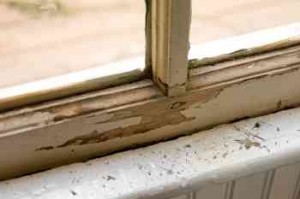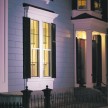Lead Paint On Windows
 Lead Paint Hazards and Older Windows
Lead Paint Hazards and Older Windows
If your home was built before 1978 and you still have the original windows, it’s time to seriously consider replacing your windows — especially if you have young children or a pregnant person living in the home.
According to the Environmental Protection Agency (EPA), the routine opening and closing of windows in homes built prior to 1978 can disturb lead-based paint around the windows, causing paint dust and chips to be released into the air. These lead particles are so dangerous that the EPA now requires contractors to be trained and certified before they can perform any renovation, repair or painting projects that may have previously applied lead-based paint.
“Research indicates that the everyday activity of opening and closing windows creates friction that then allows lead dust to enter the air,” says Rick Nevin, a consultant to the National Center for Healthy Housing (NCHH). “This dust is invisible to the naked eye, yet it can contaminate the home and expose residents to this harmful substance.
“Young children, whose developmental skills and brain functions are subjected to the lead dust, can be especially negatively impacted. Children can absorb the lead dust from crawling on the floor where the dust settles. Toddlers put their hands in their mouths … and after playing on the floor near a window, they can easily transfer the lead dust into their mouths. The ingested lead travels through the bloodstream to a child’s developing brain, causing many types of neurobehavioral damage.”
Nevin relates that the most common problem with lead in paint is not that a child is eating paint chips — it’s that the child may be exposed every day to unseen contaminated lead dust particles that have settled in household dust. The lead-contaminated dust is often connected with the operation of the window.
According to Nevin, one of the most important long-term investments a homeowner can make for the overall safety of a family is to replace older windows, using the EPA-approved lead safe renovation guidelines. “If you live in a home built before 1978, and you have single-pane windows, replace them now,” says Nevin. “This is one of the only ways to reduce lead risks for your family. Make sure to use only a contractor that is certified in lead-safe work practices and strongly consider the use of ENERGY STAR® qualified windows, like the vinyl replacement windows offered by Simonton Windows. These windows are a healthy choice for replacing older single-pane units. They’re energy-efficient and a good value for the investment.”
“At Simonton, we advocate that replacing older windows coated with lead-based paint with vinyl windows is a sensible step for homeowners who want to create a healthier home environment,” says Gary Pember with Simonton Windows. “We believe Rick’s research substantiates the replacement of all windows coated with lead based paint as a way to dramatically help reduce lead dust within that home. As such, taking the next step of installing durable, energy-efficient vinyl windows offers homeowners peace-of-mind along with energy savings in the home.”
Nevin explains that homeowners need to understand there are four key steps to completing a “lead-safe window replacement strategy” for the home. “First, replace all single-pane windows with ENERGY STAR® qualified windows,” says Nevin. “Second, stabilize any significantly deteriorated paint. Third, perform specialized cleaning to remove any lead-contaminated dust. And finally, perform dust wipe tests to confirm the absence of lead dust hazards after the clean up.”
Nevin, the NCHH and the New York University School of Medicine have been awarded a National Institute of Health challenge grant for “Preventing Child Residential Lead Exposure by Window Replacement.” The project includes the launch of a “Windows of Opportunity” website to promote the many benefits of lead-safe window replacement. For additional information, visit www.simonton.com/leadsafe.


















